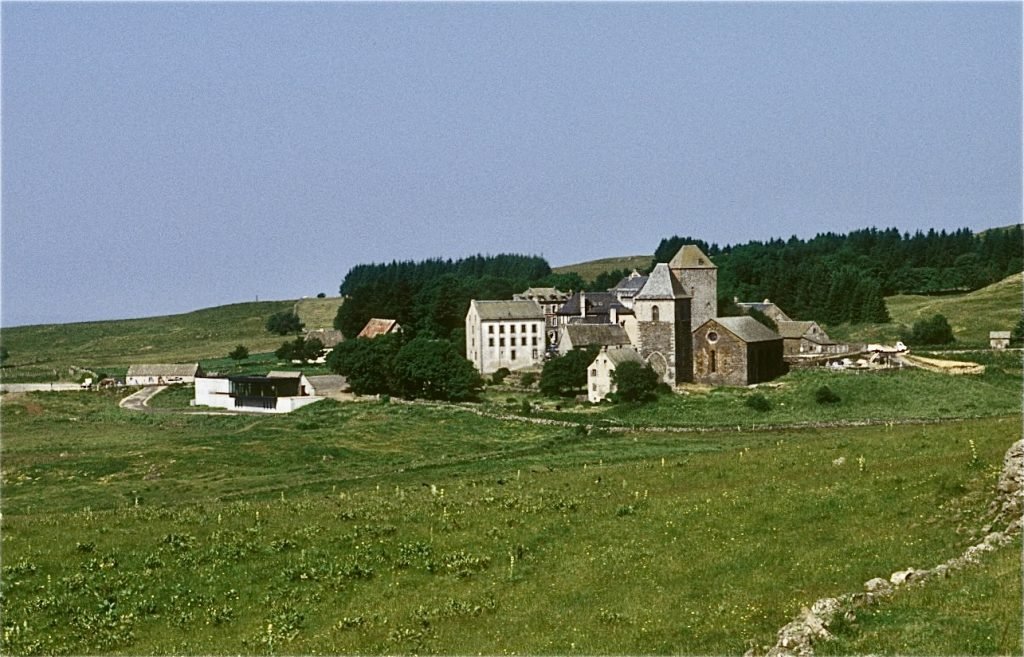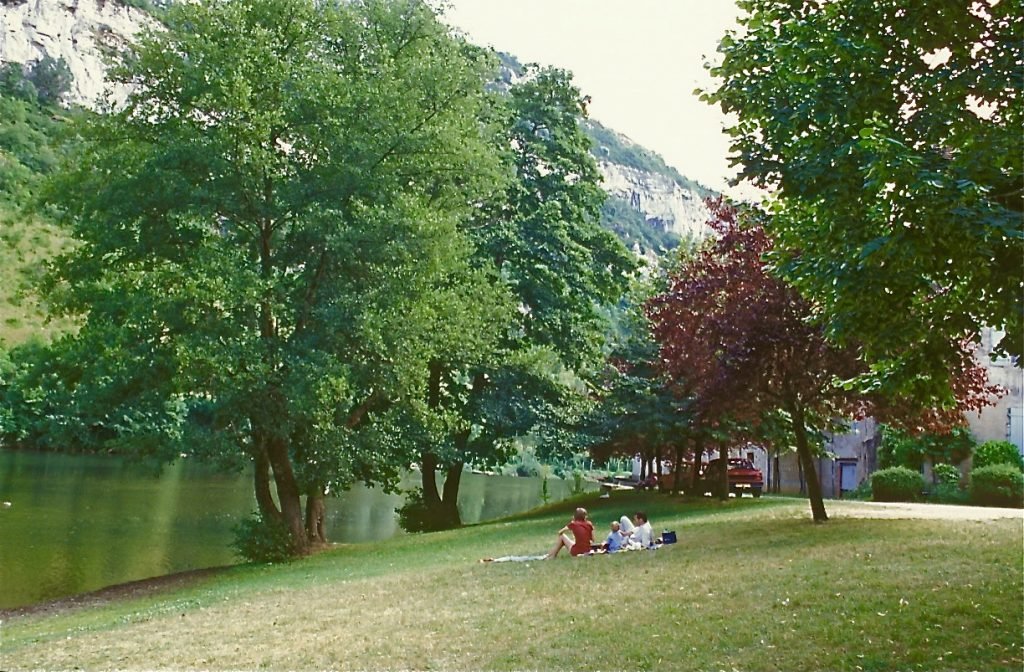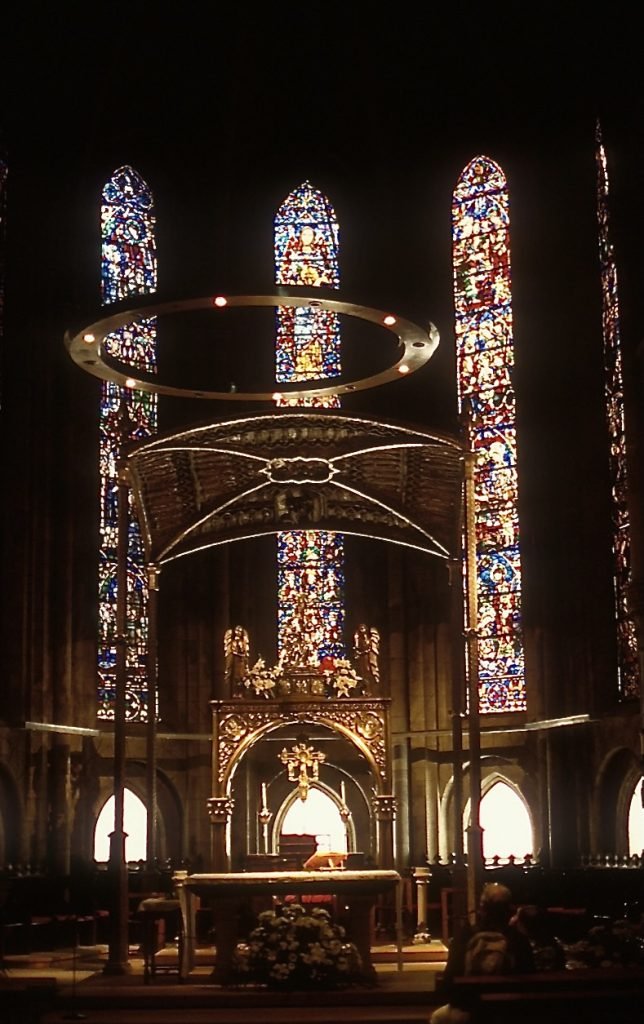by David A. May
Nature of the Ride:
This beautiful, 420 mile (700 kilometer) bicycle trip in central and southwestern France follows a famous Saint James pilgrimage route to Compostella, Spain, in use for 1200 years by pilgrims from central France, northern Italy, Switzerland, and Germany. This route is the most beautiful of the four routes in France, and also the one which best captures the experience of ancient times — as it is the most isolated from the modern world. Unlike the Camino in Spain, which is often overrun by Spanish youth on vacation as well as by pilgrims, and which often requires a strugle for lodging, the Le Puy pilgrimage route in France gives opportunities for solitude and reflection.
The great majority of pilgrims and others along the Le Puy route choose to walk, following the “official” French GR 65. Walking the GR65 from Le Puy-en-Velay to the Spanish border at Roncesvalles (in French Roncevaux) takes about a month, and covers a distance of 779 kilometers (484 miles). Continuing to Compostella on foot takes at least another month. Walking — or riding a horse or mule — will provide the experience most in line with that of ancient pilgrims.


By bicycle it takes about two weeks to reach Roncevalles, covering 40-50 kilometers per day initially, somewhat more in the second week. You will ride in picturesque rural, sometimes very hilly—even mountainous country rarely visited by tourists, and also through forests and range lands, and alongside pastures, vineyards, and farms. Your route will be upon mostly traffic-free roads (except for moderate traffic in eight larger towns where you could walk your bike on sidewalks/pavements). Every day you will encounter handsome, unspoiled, often ancient villages, meet other travelers who are going the same way, and in some cases, such as mine, forming enduring friendships. You will also come upon a number of stunning, wonderous first-class churches, monuments, and works of art. Make no mistake: Much of the route is extremely hilly, with long, fairly steep climbs, but if you wish, you can arrange to have your baggage transported. After the long physical effort to climb, you will be rewarded with some wonderful ridge rides and breathtaking, long and fast descents. If you enjoy cycling, this bicycle trip is guaranteed to create indelible memories, not only of the cycling but also of people, monuments and art.
Characterization and Attractions:


This trip provides exhilarating riding in hilly country; a large variety of terrain, and many architectural styles is seven different French departments; enjoyment of natural beauty away from crowds; and a variety very good food and drink, including duck, foie gras, and armagnac later in the ride. If you are looking for an easygoing trip, flat country, ubiquitous bicycle paths, many fine restaurants, luxurious hotels, or nightlife, this trip is not for you.
The “wonders” of this trip, as you might expect, consist of cathedrals, churches, and religious art, but also of 25,000 years old cave paintings, Roman mosaic floors, picturesque villages and towns, stunning long views, and military architecture. The historical and artistic aspects of the pilgrimage will appeal to many. True pilgrims, will encounter many sites for veneration.
I have marked certain attractions with stars, following the Michelin Guide tradition. In my considered opinion, a one star attraction is quite interesting; a two star attraction, spectacular; and a three star attraction worth making a substantial detour to experience.
The Experience:
This bike trip is not just a bike tour but rather a “trek” or an “expedition” or a “pilgrimage”. There is the sensation of following a long-beaten path that millions have followed before, moving not only in the company of many others who you meet or see along the way, but also commuting with those who walked or rode horses or mules the same way 600 – 800 – 1,200 years ago. Given the difficulty, the miles to cover, the relative isolation from luxury and mass-tourism, and the presence of many others who are going the same way, cyclists – the religious and also the non-religious – may feel that they are part of something greater than themselves. You may well learn something on this trip: maybe something about spirituality, maybe about life, maybe about yourself. And once you return home, you will have a great sense of accomplishment and indelible memories.
Link to History of the Saint James routes and Current Use – On foot or by bike